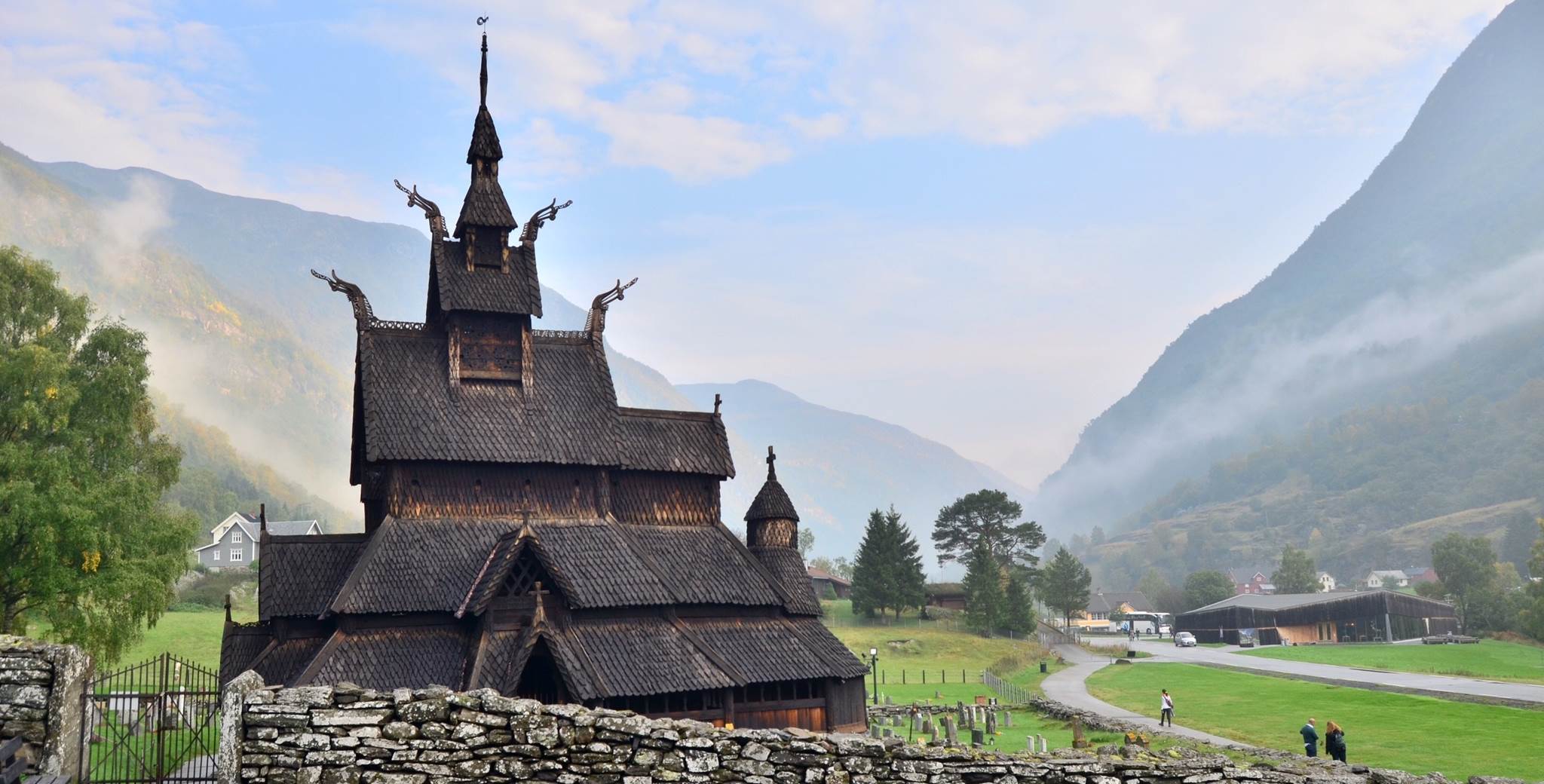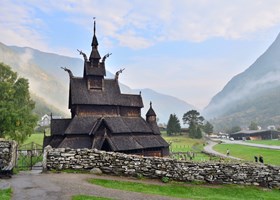

Borgund, Sogn og Fjordane (Vestland)
Owned by the National Trust of Norway since 1877.
The best preserved of all Norwegian stave churches. Borgund stave church has stood on the same site since it was built in 1180. With its well-preserved medieval exterior, tiered roof and dragon heads, Borgund stave church is the very prototype of a stave church. Many consider Borgund to be the best preserved of the Norwegian stave churches, and it has served as a model during the restoration of several other stave churches. The stave church construction is based on load-bearing posts (staves) and columns. Important characteristics include the structure with galleries, side aisles, raised roof above the central space, the ridge turret on top of the roof and the scale-like wooden shingles on the roof and walls. The church is dedicated to Andrew the Apostle. Today, the interior is simple and unpainted with a mid-16th century pulpit. The altarpiece with a painting depicting the crucifixion dates from 1654.
Stave bell tower. South of the church is a free-standing bell tower that used to contain a bell dating from the 13th century. This is the only free-standing stave bell tower in Norway, and was probably built in the Middle Ages.
Borgund visitor centre. A visitor centre that contains exhibitions and information about the Norwegian stave churches and religious life in the Middle Ages was opened in 2005. The centre was designed by architecture firm Askim Lanto arkitekter, and its contemporary architecture adapted to the location is an experience in itself. The visitor centre is also home to the exhibition Unique Viking finds, which displays findings from the early part of the Viking Age. There is a café and museum shop in the centre.
Sustainable visit. Sustainable visitor management is important in order to preserve the stave church for future generations. For this reason, Borgund will limit the number of visitors in the stave church to a maximum of 20 at any one time from the 2022 season onwards, and we will only accommodate bus parties that have booked in advance. This is part of our long-term management of this highly valuable cultural heritage site, and it will also make for a better visitor experience with less crowding and better communication of information. The limit on the number of visitors may at times result in a short wait. We therefore recommend that visitors allow more time at Borgund so that they can make use of the visitor centre and the beautiful surrounding areas with opportunities for great walks along Kongevegen (the old King’s Road).
Borgund is a certified Eco-Lighthouse and focuses on sustainability in all aspects of its operations.
Things to do in the area: There is a lot to experience in the area around Borgund stave church – there is Kongevegen, the old King's Road over Filefjell mountain, new Borgund church (1886), old summer pasture farms and a magnificent landscape. There are walks in beautiful historic surroundings with different routes you can follow. The best known route is the round trip Vindhellavegen/Sverrestigen along the old King's Road.
Sources:
Kirker i Norge. Anker, Leif and Havran, Jiri. ARFO. 2005./ En reise gjennom norsk byggekunst, ed. Terje Forseth. National Trust of Norway, 1994.

Opening hours
- Season: 15.04 - 13.10
- Opening hours: 09.30 - 17.00 every day. Closed 17. May.
Ticket prices
- Adults: 130,- NOK
- Groups (min 15 pers): 120,- NOK pp (Groups have to make a reservation)
- Family: 300,- NOK
- Children/students: 90,- NOK
- Seniors: 110,- NOK
- Ticket prices 2024
Visit us
Vindhella 6066888 BORGUND
Contact us
- Tlf: 457 38 972
- Epost: borgund@fortidsminneforeningen.no
- Epost: borgund@stavechurch.com





 Mail
Mail